 Subaru Legacy: Towing and tie-down hooks/holes
Subaru Legacy: Towing and tie-down hooks/holes
The towing hooks should be used only in an emergency (e.g., to free a stuck vehicle from mud, sand or snow).
CAUTION
● Use only the specified towing hooks and tie-down hooks/holes. Never use suspension parts or other parts of the body for towing or tie-down purposes.
● Never use the tie-down hole closest to the muffler under the vehicle for towing purposes.
● To prevent deformation to the bumper and the towing hook, do not apply excessive lateral load to the towing hooks.
Front towing hook:
1. Take out the towing hook and screwdriver from the on board tool bucket. Take out the jack handle from the trunk (Legacy) or cargo area (Outback).
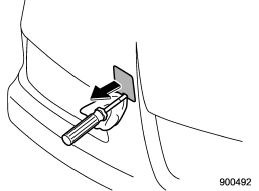
2. Pry off the cover on the front bumper using a screwdriver, and you will find a threaded hole for attaching the towing hook.
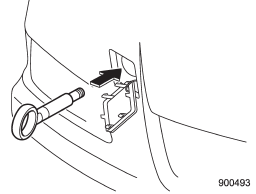
3. Screw the towing hook into the threaded hole until the threads can no longer be seen.
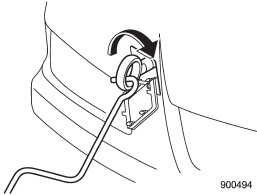
4. Tighten the towing hook securely using the jack handle.
After towing, remove the towing hook from the vehicle and stow it in the tool bucket. Fit the towing hook cover on the bumper.
WARNING
● Do not use the towing hook except when towing your vehicle.
● Be sure to remove the towing hook after towing. Leaving the towing hook mounted
on the vehicle could interfere with proper operation of the SRS airbag system in
a frontal collision.
Rear towing hook:
1. Take the towing hook out of the tool bucket and take the screwdriver out of the tool bucket. Take the jack handle out of the trunk (Legacy) or cargo area (Outback).
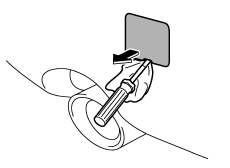
2. Pry off the cover on the rear bumper using a screwdriver, and you will find a threaded hole for attaching the towing hook.
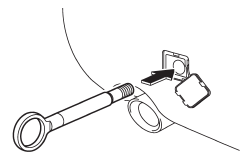
3. Screw the towing hook into the threaded hole until its thread can no longer be seen.
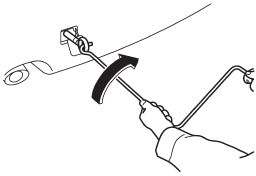
4. Tighten the towing hook securely using the jack handle.
After towing, remove the towing hook from the vehicle and stow it in the tool bucket. Fit the towing hook cover on the bumper.
WARNING
Do not use the towing hook except when towing your vehicle.
Front tie-down hooks:
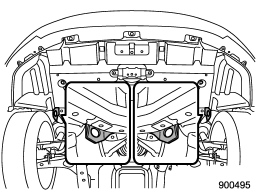
The front tie-down hooks are located between each of the front tires and the front bumper.
Rear tie-down holes:
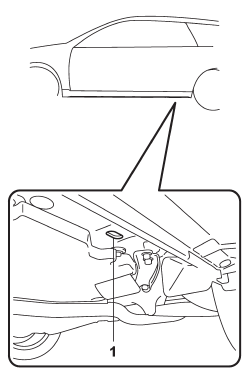
1) Rear tie-down hole
The rear tie-down holes are located near each of the jack-up reinforcements.
WARNING
Use the rear tie-down holes only for downward anchoring. If they are used to anchor the vehicle in any other direction, cables may slip out of the holes, possibly causing a dangerous situation.
 Towing
Towing
WARNING
Never tow AWD vehicles (including AT, MT and CVT) with the front wheels raised
off the ground while the rear wheels are on the ground, or with the rear wheels
raised off the ground while ...
 Using a flat-bed truck
Using a flat-bed truck
This is the best way to transport your vehicle. Use the following procedures
to ensure safe transportation.
1. Shift the select lever into the “P” position for AT and CVT models or the
shif ...
See also:
New Vehicle Break-In
Notice:
The vehicle does not
need an elaborate break-in. But it
will perform better in the long run
if you follow these guidelines:
• Do not drive at any one
constant speed, fast or slow, ...
Daytime running lamps
Daytime running lamps in Canada
The daytime running lamps function is
required by law in Canada. It cannot therefore
be deactivated.
•► Turn the light switch to or
.
With the engine r ...
Freeing a stuck vehicle
If your vehicle becomes stuck in mud, sand, or snow, itcan often be moved by
a rocking motion. Turn yoursteering wheel right and left to clear the area around
thefront wheels. Then shift back and ...
